WEEK 1
After having a chance to visit the V&A, especially the Rapid Response Collecting section as a group, we had a lot of discussions due to our position towards each of the objects. By coming from a different backgrounds, and different cultures opened up more perspectives towards the same object.
Tom of Finland stamps was one of the objects in the Rapid Response Collection that we were interested in the most, so we decided to choose to explore further with them.

To get started, we did some research on it and, at the same time, brainstormed and asked each other the following questions to understand the object more.
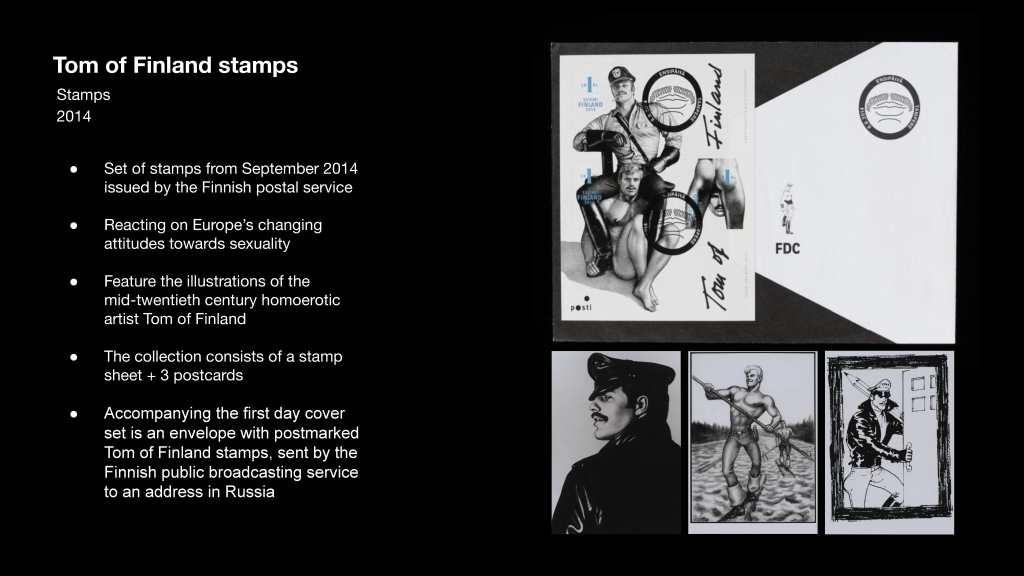
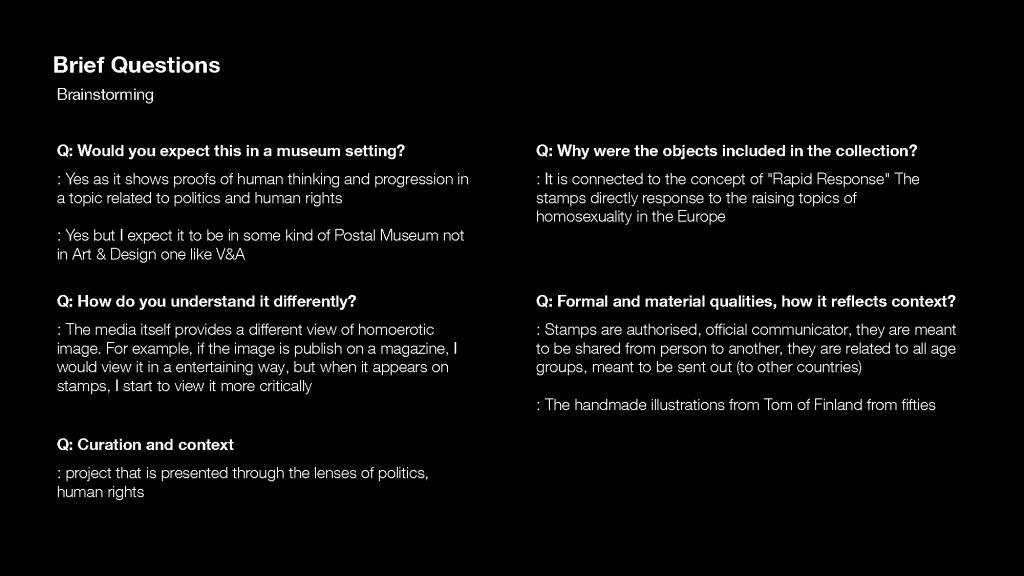
We then started to analyze the object as a group.
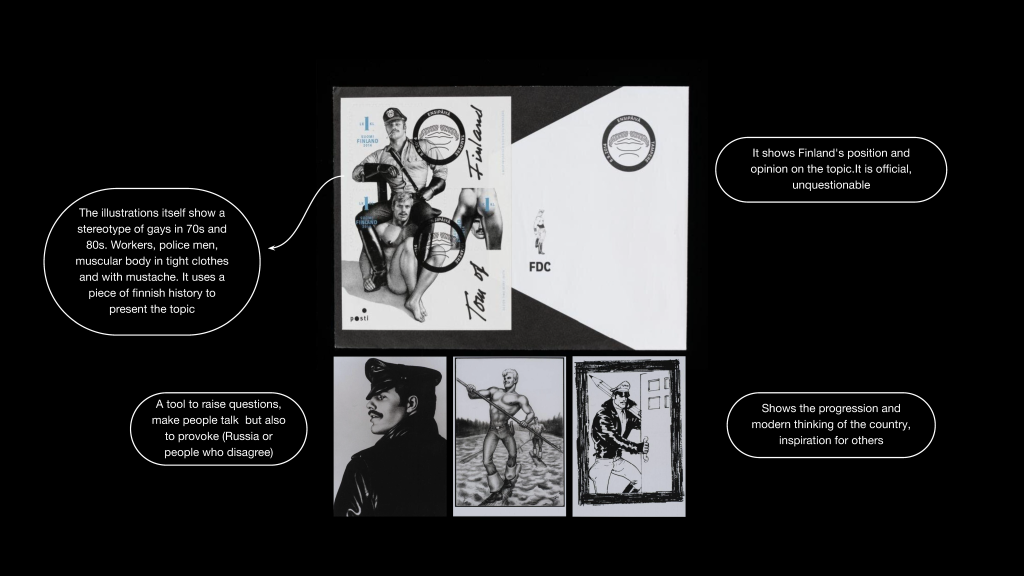
After having a discussion about the object itself, we began to look deep into the medium that it is being presented in, which is a stamp.
Stamps – investigating the medium
- Stamps are commonly printed by national postal services with images celebrating their country’s achievements and representing them internationally
- Meant to be shared with other people, put onto letters and parcels
- Brings a certain message or a piece of information
- Easy to transport. Doesn’t stay only within the country
- Includes: subject, stamp value, country of origin
- A formal media that gives the topic official recognition. Authorised and official
- Material: fibrous paper, rarely embossed foil or different material (gold, lace), ink, glue coating
- Audience: stamp is a media that applies to different age groups
Then, we began to involve our own positions in this investigation and did some research about the stamps in our countries.
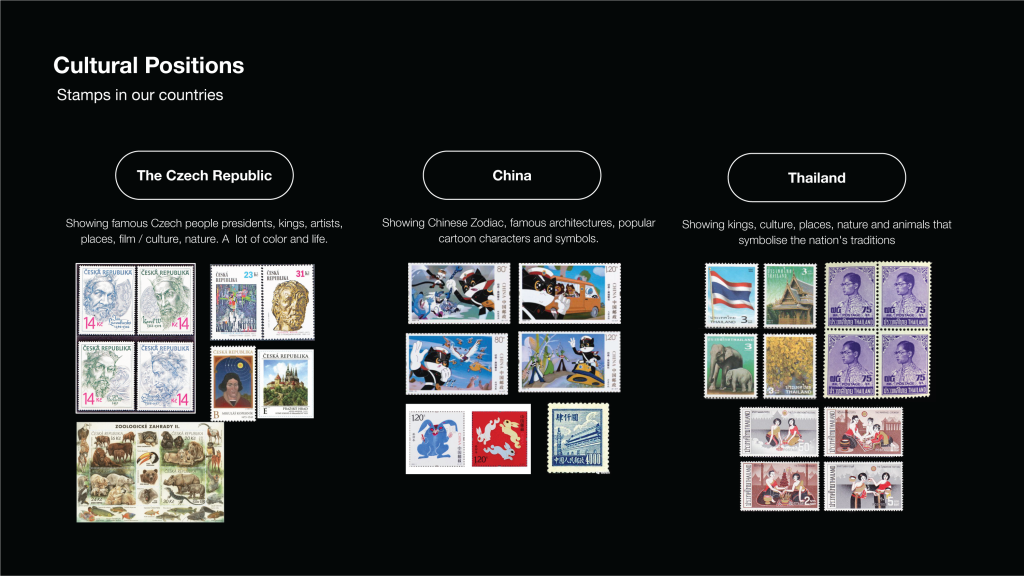
Throughout the process, we also talked about our personal positions on the topic, and how each of us came from a different country and from different background, with the cultural one being “prominent” in this case, it was interesting to see the different positions and opinions, we decided to explore further the positions of the countries we come from.
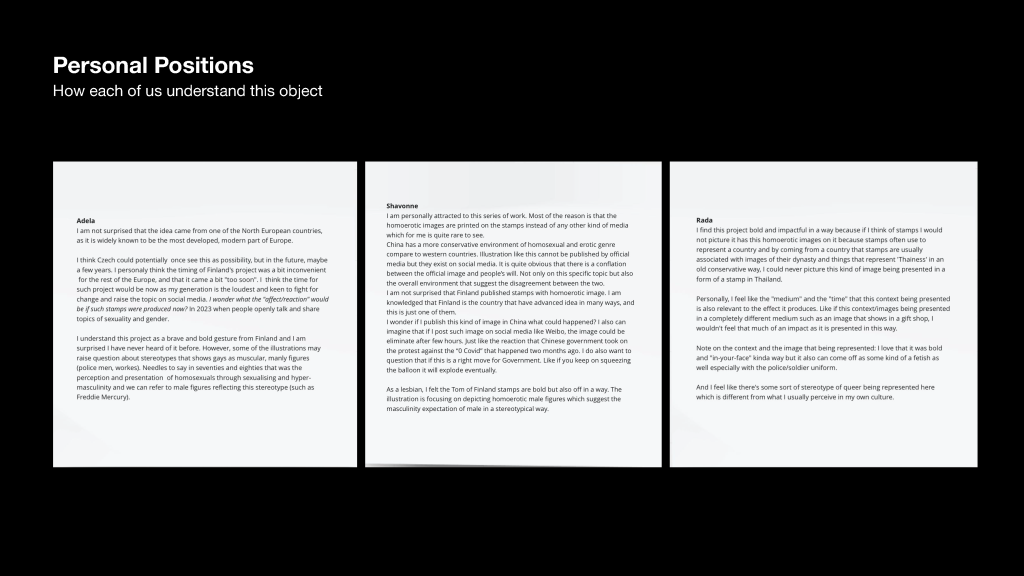
Adela: I am not surprised that the idea came from one of the North European countries, as it is widely known to be the most developed, modern part of Europe.
I think Czech could potentially once see this as possibility, but in the future, maybe a few years. I personaly think the timing of Finland’s project was a bit inconvenient for the rest of the Europe, and that it came a bit “too soon”. I think the time for such project would be now as my generation is the loudest and keen to fight for change and raise the topic on social media. I wonder what the “affect/reaction” would be if such stamps were produced now? In 2023 when people openly talk and share topics of sexuality and gender.
I understand this project as a brave and bold gesture from Finland and I am surprised I have never heard of it before. However, some of the illustrations may raise question about stereotypes that shows gays as muscular, manly figures (police men, workes). Needles to say in seventies and eighties that was the perception and presentation of homosexuals through sexualising and hyper-masculinity and we can refer to male figures reflecting this stereotype (such as Freddie Mercury).
Shavonne: I am personally attracted to this series of work. Most of the reason is that the homoerotic images are printed on the stamps instead of any other kind of media which for me is quite rare to see.
China has a more conservative environment of homosexual and erotic genre compare to western countries. Illustration like this cannot be published by official media but they exist on social media. It is quite obvious that there is a conflation between the official image and people’s will. Not only on this specific topic but also the overall environment that suggest the disagreement between the two.
I am not surprised that Finland published stamps with homoerotic image. I am knowledged that Finland is the country that have advanced idea in many ways, and this is just one of them.
I wonder if I publish this kind of image in China what could happened? I also can imagine that if I post such image on social media like Weibo, the image could be eliminate after few hours. Just like the reaction that Chinese government took on the protest against the “0 Covid” that happened two months ago. I do also want to question that if this is a right move for Government. Like if you keep on squeezing the balloon it will explode eventually.
As a lesbian, I felt the Tom of Finland stamps are bold but also off in a way. The illustration is focusing on depicting homoerotic male figures which suggest the masculinity expectation of male in a stereotypical way.
Rada: I find this project bold and impactful in a way because if I think of stamps I would not picture it has this homoerotic images on it because stamps often use to represent a country and by coming from a country that stamps are usually associated with images of their dynasty and things that represent ‘Thainess’ in an old conservative way, I could never picture this kind of image being presented in a form of a stamp in Thailand.
Personally, I feel like the “medium” and the “time” that this context being presented is also relevant to the effect it produces. Like if this context/images being presented in a completely different medium such as an image that shows in a gift shop, I wouldn’t feel that much of an impact as it is presented in this way.
Note on the context and the image that being represented: I love that it was bold and “in-your-face” kinda way but it also can come off as some kind of a fetish as well especially with the police/soldier uniform.
And I feel like there’s some sort of stereotype of queer being represented here, which is different from what I usually perceive in my own culture.
During the discussion and what we’ve encountered in the research, there were some questions arose which can be divided into two main topics; questions about the relationship between medium-context and questions mainly about the context itself.
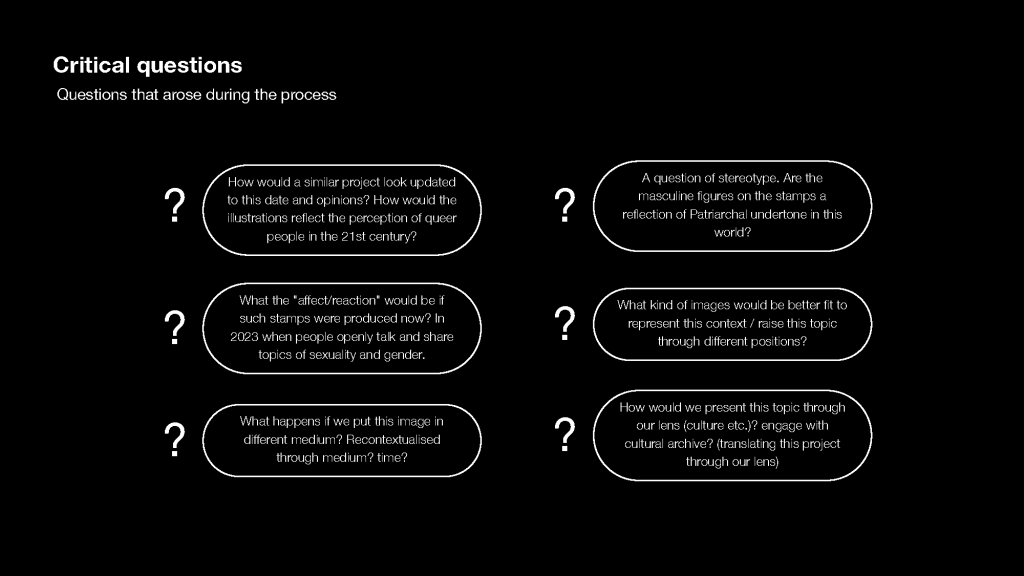
- How would a similar project look update to this date, and what opinions? How would the illustrations reflect the perception of queer people in the 21st century?
- What the “effect/reaction” would be if such stamps were produced now? In 2023 when people openly talk and share topics of sexuality and gender
- What happens if we put this image in a different medium? Recontextualised through the medium? Time?
- A question of stereotype; Are the masculine figures on the stamps a reflection of the Patriarchal undertone in this world?
- What kind of images would be a better fit to represent this context / raise this topic through different positions?
- How would we present this topic through our lens (culture etc.)? engage with the cultural archive? (translating this project through our lens)
After having some discussion, doing some research plus our own personal positions, the critical questions that we came up tend to raise lots of points about stereotypes and positions on queer community over time and how it’s affected by our own cultures.
So we decided to work with archives and research more on our cultural histories through them.
“Archives are a reflection of the society in which they exist.”
Miranda Mims, Archival Futurism: Archives as social justice
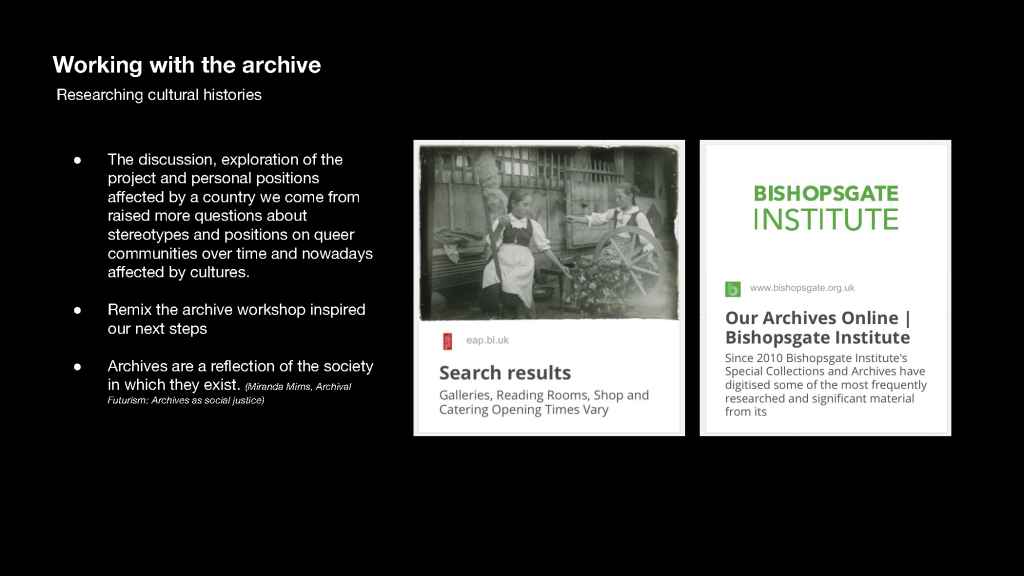
Then, we collected the material such as old magazines, pictures, films, news that talk about or associated with queer culture in own country.
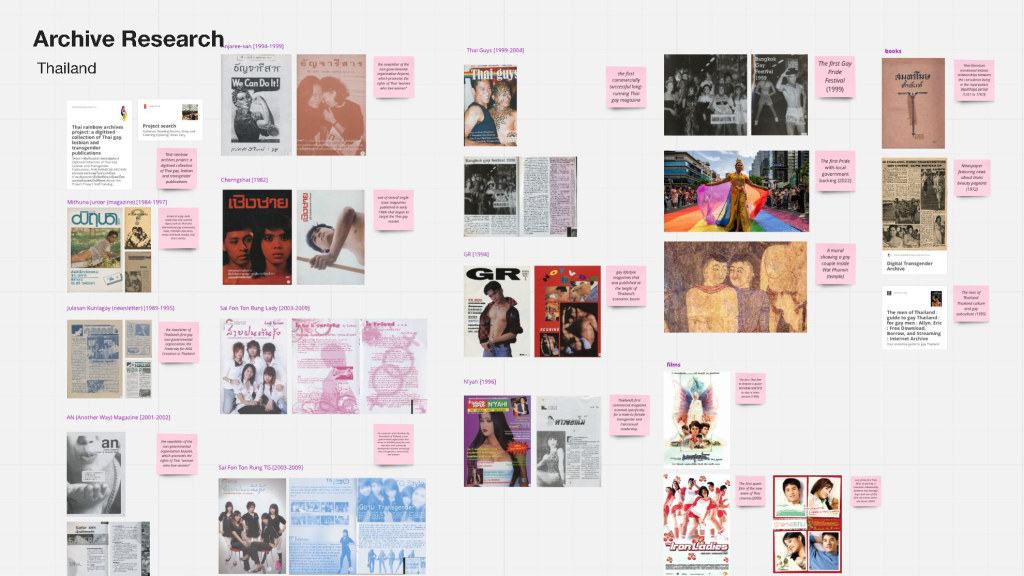
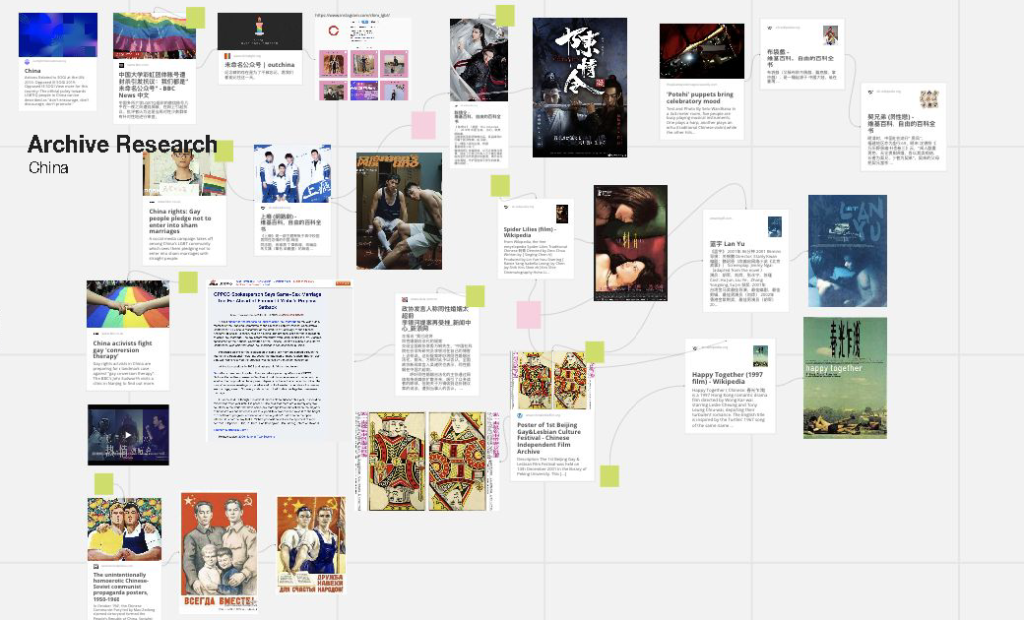

After that, each of us decided to do some experiments with visual elements from our research and archives.
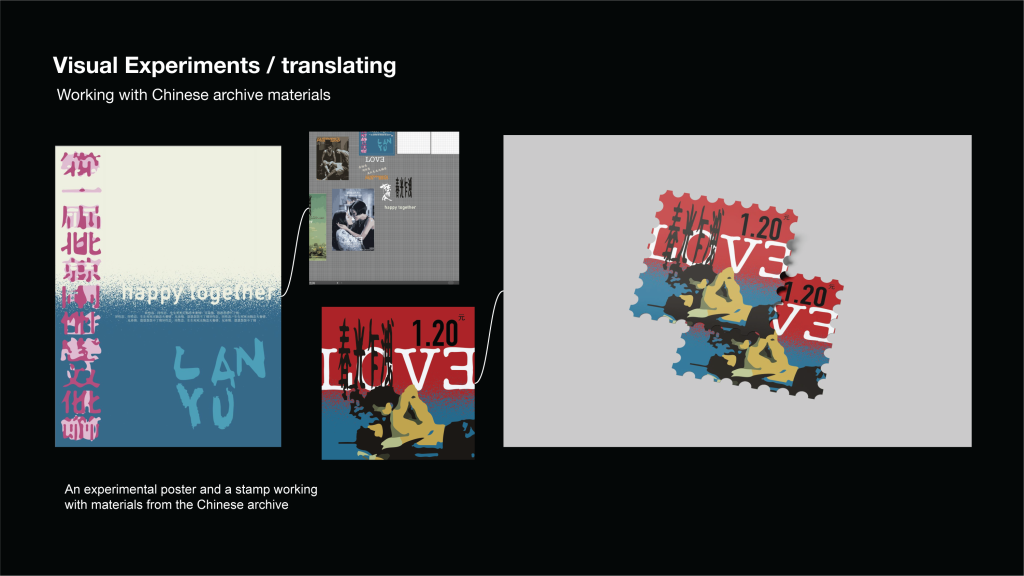
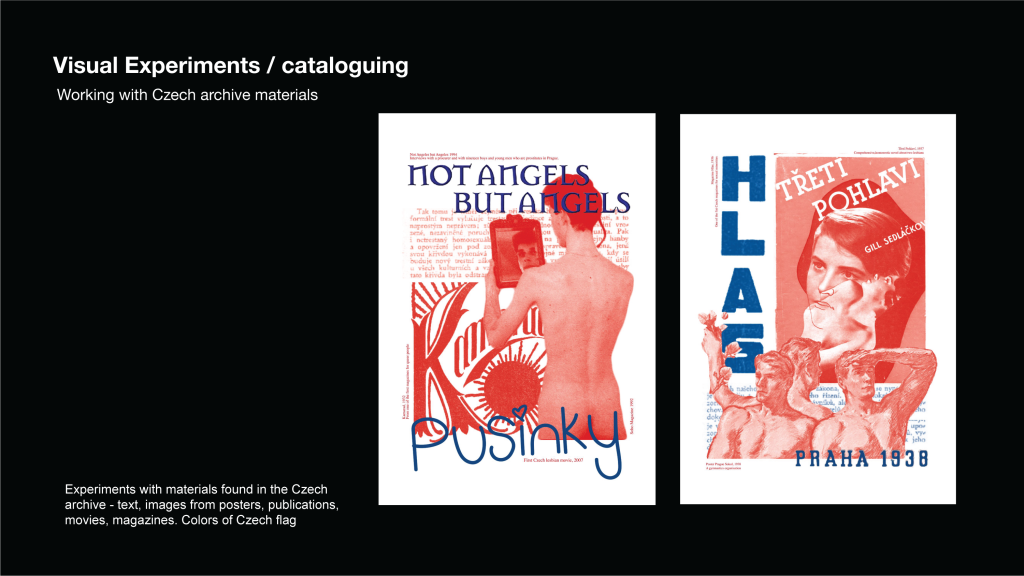
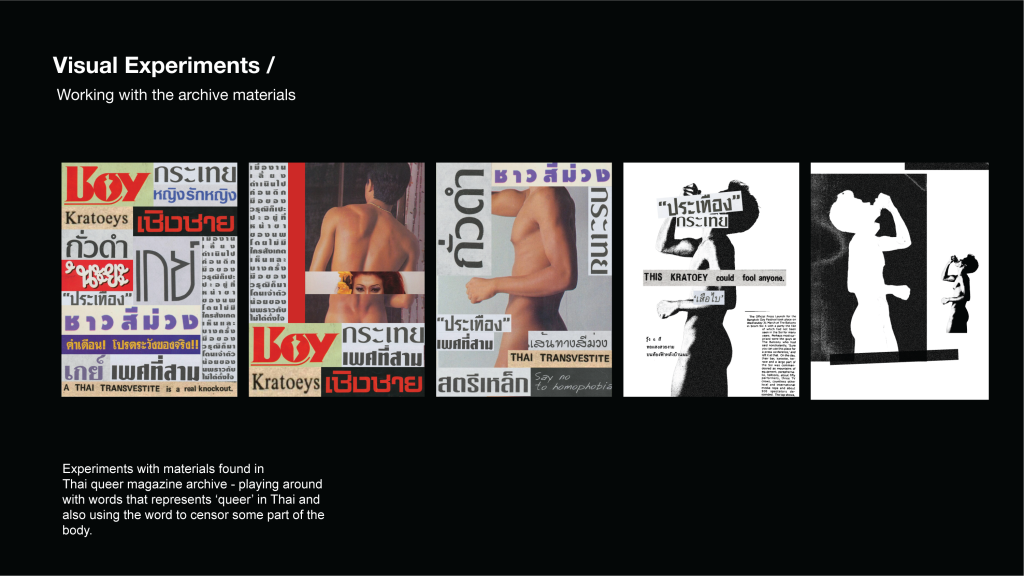
To develop further
- After the research and first visual experiments, we are interested in exploring the connection between the topic and the position of the different countries we come from
- Our aim is to raise questions about how the position of queer community has been developing throughout different countries and times and raise questions about how the positions can be changed/shifted further?
- Working with archives and stamps as a medium
- Creating our own collection of stamps coming from different positions of each country?
